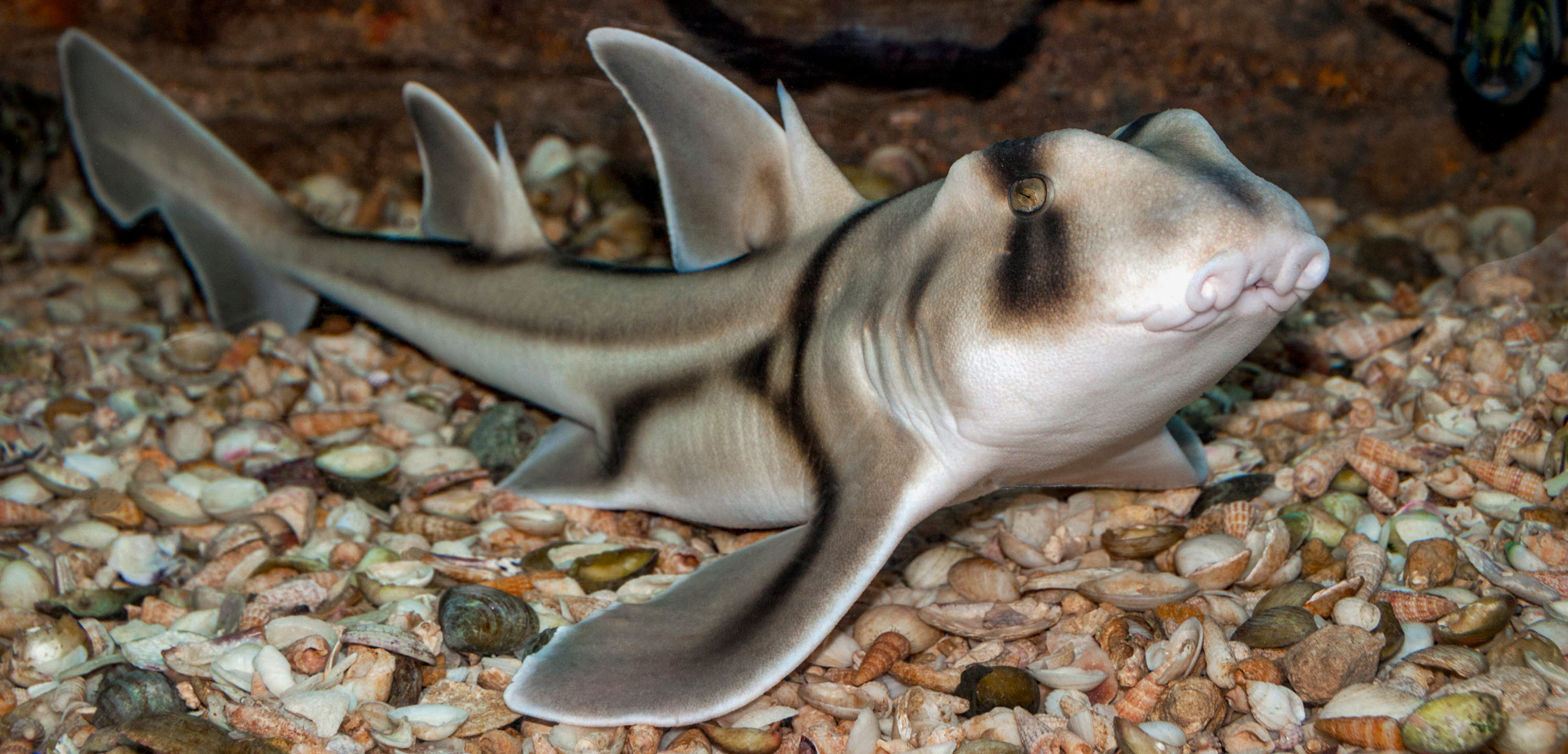Rock-a-bye Shark-y
Researchers may have finally found evidence for sleep in sharks.
Article body copy
There’s an oft-repeated factoid about sharks: they must keep swimming or they’ll drown. However, this isn’t always the case. Sharks that live on the seafloor, like the aptly named carpet sharks, can remain stationary and keep breathing by pushing water over their gills using a technique called buccal pumping. These bottom-dwellers can stay immobile for long periods of time—an observation that led scientists to wonder if the sharks might actually be sleeping.
Despite anecdotal reports of sleep-like behavior in nurse sharks and other seafloor-dwelling species, the question of whether sharks actually sleep has been hotly debated, though little tested.
Sleep is ubiquitous across the animal kingdom, and plenty of aquatic species, such as jellyfish and zebrafish, manage to slumber underwater. “But, in general, we have very little data on sleep behavior outside of mammals and birds,” says Michael L. Kelly, a sleep physiologist at La Trobe University in Australia.
Now, a groundbreaking study led by Kelly has shown the first evidence for sleep in sharks.
Technically speaking, true sleep consists of two behaviors: a lack of movement that can be rapidly reversed, and a decreased awareness of surroundings. These behaviors are regulated by an animal’s light-dark circadian rhythm and its homeostatic need to balance time asleep with time awake.
“You can’t ask a shark whether it’s sleeping or not, but you can test for these specific behaviors,” explains Kelly. To catch sharks snoozing in a vast, deep ocean is difficult, so the researchers used captive sharks instead. They tested two buccal pumping species—the Port Jackson and the draughtsboard shark—both of which have previously been shown to exhibit reversible periods of stillness and circadian activity patterns.
The researchers applied a series of mild electrical pulses to the sharks’ tanks to see how they responded. They did this when the sharks were either actively swimming, or after they had been lying motionless for at least five minutes. The scientists also kept the sharks awake to see if their homeostatic processes would try to make up for lost sleep—essentially, to see if the sharks would “sleep in.”
The scientists found that, for both species, they had to apply a stronger electrical pulse to get a response from an inactive shark than from one that was swimming.
Interestingly, none of the animals slept more after being kept awake. This suggests, the scientists say, that sleep in these sharks might be controlled by circadian rhythms instead of homeostatic processes.
The next step in understanding shark sleep, says Kelly, is to monitor a sleeping shark’s metabolism and brainwave activity, though he says these electrical signals are difficult to measure accurately in salt water. Further work should also test for sleep in constantly swimming species, like great whites, which may be specially adapted to sleep on the move.
Studying sleep in sharks, which have existed for 450 million years, provides clues as to when and how sleep may have evolved in other vertebrates. “It can give us insight into whether sleep evolved once, or whether some animals have evolved to lose the need for sleep,” says Kelly.
Even for humans, many questions surrounding the origin and function of sleep remain unanswered. Research into animal sleep could reveal ways to improve our health and alleviate disease, says Catherine Anne Boisvert, an evolutionary biologist at Curtin University in Australia who was not involved in the study.
“This is just the tip of the iceberg,” says Boisvert. “We still have a lot to learn from sharks.”

